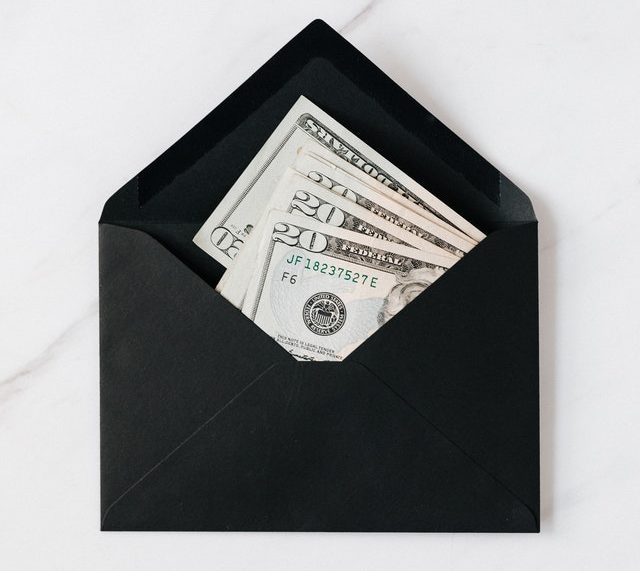3 Steps to Deciding How Much of Your Paycheck to Save

Having savings is a given, right? However, saving is not always simple. It takes some forethought but once you have your system down pat, it’ll be so common nature that you’ll be saving without thinking about it. So here are the 3 steps to take to decide how much of your paycheck to save.
- Decide on your savings goals.
- Open an account(s) for where this money will live.
- Create and implement a savings plan.
DISCLOSURE: THIS POST CONTAINS REFERRAL LINKS, MEANING I GET A COMMISSION IF YOU DECIDE TO MAKE USE OF MY LINKS, AT NO COST TO YOU. SEE DISCLAIMER PAGE FOR MORE INFORMATION.
How Much of My Paycheck Should I Save Each Month?
The simple answer: as much as possible. Seriously though, if possible, it is recommended to save at least 20%. How do you know how much is 20%? Take your check amount and multiply it by 0.2. Did that number scare you or excite you?
If you’re not saving anywhere near that number yet, don’t stress it. When I first started my career as a nurse, I couldn’t even tell you how much I was saving because I wasn’t saving at all.
READ MORE: My Money Journey
So you’re not alone. Remember the simple answer is to save as much as possible. So if that is 5%, 10%, less, or more, pick a number that is achievable and stick to it. Create a routine around it by setting up automatic transfers.
READ MORE: How To Create A Routine To Get Results You Want
What Are Your Savings Goals?

Have you thought of WHY you want to save money? Your WHY is important. It keeps you grounded and focused. Your circumstances may change so you have to adjust your methods and tools. However, if you have defined your why, you would’ve defined your purpose for saving money and you will remain motivated on the way there.
Potential Savings Goals to Work Toward
What goals might you want to work on?
An Emergency Fund
Emergency funds are essential as they protect you from having to take on debt to care for an emergency. They are also a source of comfort. The anxiety that comes with not knowing how you’re going to cover the next crisis lessens or goes away completely.
READ MORE: The Best Way to Successfully Build An Emergency Fund
READ MORE: How Much Do You Need in an Emergency Fund?
Paying Off High-Interest Debt
High-Interest Debt is especially insidious because you can’t make that money back…at all! The interest rate on this debt is greater than any bank account or simple investment strategy will give you.
Though it is easy to accumulate that interest, finding any investment that’ll give you over 17% interest is not so easy. So it is important to get rid of this debt as soon as possible.
READ MORE: 4 Steps to Being Debt Free
Saving for Retirement
According to a CNBC report, 61% of millennials anticipate working a part-time job during retirement. If that doesn’t appeal to you, you need to start saving for retirement right away. It’s not too hard or too late. Just get it done.
READ MORE: Why You Should Have Money In An IRA Now
READ MORE: Let’s Get Investing!!!
Saving for Other Goals aka Things That You Care About
Ever heard of sinking funds? Unlike emergency funds, money held in these accounts is meant to be used. You could save up for a vacation, down payment for a home, gifts, home remodels, car or pet expenses, etc. This has a similar effect as your emergency fund where you can have the things you want without using debt to get them.
So think about the things you want and start saving for them.
READ MORE: How many bank accounts could you possibly need?!
Where Should I Put My Savings?
Once you’ve determined that you need to save and for what, now you have to determine where you’re going to keep these savings. Some options: checking account, general savings account, high-yield savings account, or investments. Which one is right for you?
Checking account
While this is where most people’s paychecks wind up, this is not the place for savings. These accounts usually don’t accrue interest. So while it’s great for expenses because there’s no limit on transactions, it’s terrible for building up savings.
General savings account
The bank you have your checking account likely offers a savings account. The thing is most large commercial banks have pitiful interest rates that make it almost completely pointless to have.
High-yield savings account
A high-yield savings account (HYSA) offers a competitive savings rate that traditionally matches or beats inflation. Inflation is normally around 2% and these accounts typically have similar interest rates. Sometimes they can even run higher. Nerdwallet is a great website to use to determine who is giving the best interest rates right now.
Contribute to your 401K or investments
The most potential growth you’ll ever get from your money is by investing. Your 403b or 401k isn’t a place to stash money you might want up using before retirement. However, a Roth IRA is a retirement account that has the unique benefit that you could remove the amount you put in. For this reason, some people use this to store their savings as it is allowed to grow significantly if it isn’t used.
If you’re not comfortable doing that though, you still have the HYSA as one of the best options to save and grow your money.
READ MORE: Why You Should Have Money In An IRA Now
I Can’t Save That Much From My Paycheck—Now What?

Saving is easier said than done right? After all, it seems like every paycheck is spent before you can think of what to do with it. You can change that though. Let’s consider some options.
Budget for your lifestyle
An important part of determining how much you can save is to see how much your lifestyle costs. How does that compare with how much you’re bringing in? Are there adjustments you can make to decrease your expenses to give yourself some breathing room?
READ MORE: How I Saved Hundreds by Getting New Car Insurance
READ MORE: Four Compelling Reasons to Cancel Some of Your Subscriptions
READ MORE: How To Save More Money on Your Electric Bill
READ MORE: 5 Reasons You Need to Start Meal Prepping Today
READ MORE: Nix Fees & Never Get Charged By The Bank Again!
READ MORE: How to save on your mortgage
READ MORE: Stop Paying ATM Fees!
Make a change jar
Yes, I said a change jar. This can be done either physically & digitally. I’m a physical way, if you’re a person who uses cash often, you can throw in dollars and coins when you make change. It’s an easy, almost mindless way to save. Then all you have to do is pick a timeframe for when you’ll deposit it into the savings vessel of your choice.
Now if you are more digital and an avid debit card user, you can bank with providers who round up your transactions and put the difference in savings or investing. For example, if you make a purchase of $4.60, the bank will send $0.40 to your savings or investment account.
While this may seem like a small amount, these help to create solid habits for you to build your wealth on.
Read more: Investing with Stash – Great App for Beginner Investors
Practice a frugal mindset
What is a frugal mindset? There is a difference between being frugal and being cheap. Being frugal is defined as sparing or economical with regard to money. Being cheap is defined as miserly or stingy. Did you notice the difference in how each definition made you feel?
Being frugal is a mindset shift. For example, if you have a shirt with a tear in it, rather than replacing it, could you fix it or get it fixed? A shoe with a damaged heel or sole? A piece of jewelry with a broken clasp? A couch with a bleach stain? That last one was personal. Now being of a frugal mindset, you think of other options besides buying the full-price solution.
A great book to read or listen to in order to get more ideas on ways you could apply frugality is Meet the Frugalwoods.
READ MORE: How to tell when you’re being frugal or being cheap
Pay savings, then yourself
You have a budget, right? If you don’t, you need one. It doesn’t have to be as specific as giving every single thing a line item if you don’t want to. But it is the best and only way to see where your money is going.
Savings should be a line item on your budget just like your housing costs or groceries would be. Pay yourself first!
Diversify your income
In this day & age, there are tons of opportunities to make extra money. Gig apps like Uber Eats, online focus groups, Fiverr, and starting an online business are all options for giving yourself some more breathing room in your budget.
Read more: I Did Uber Eats for a Week – Learn How to Best Use It to Actually Make Money
How Can I Put More Money in Savings?
The key is to create as much distance as possible between how much you make versus how much you spend. The bigger that gap with your income being higher than your expenses, the more you’re going to be able to save and invest. Try one of more of the suggestions discussed and see your money grow.

How to Save Money and See Results! —
[…] READ MORE: 3 Steps to Deciding How Much of Your Paycheck to Save […]
How Much Do You Need in an Emergency Fund? —
[…] READ MORE: 3 Steps to Deciding How Much of Your Paycheck to Save […]
How many bank accounts could you possibly need?! —
[…] READ MORE: 3 Steps to Deciding How Much of Your Paycheck to Save […]